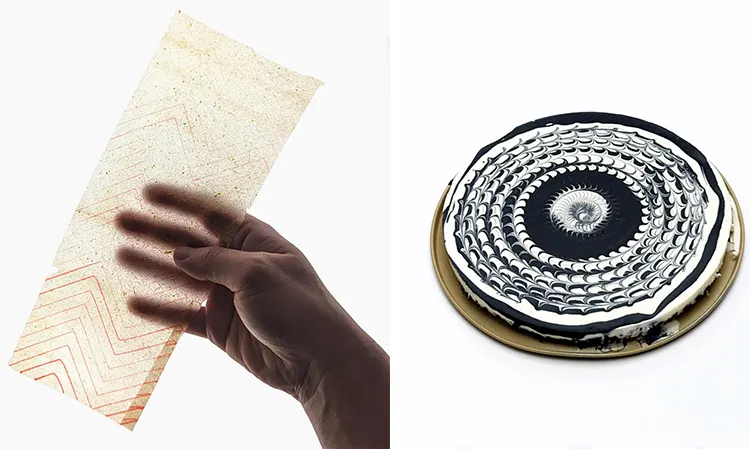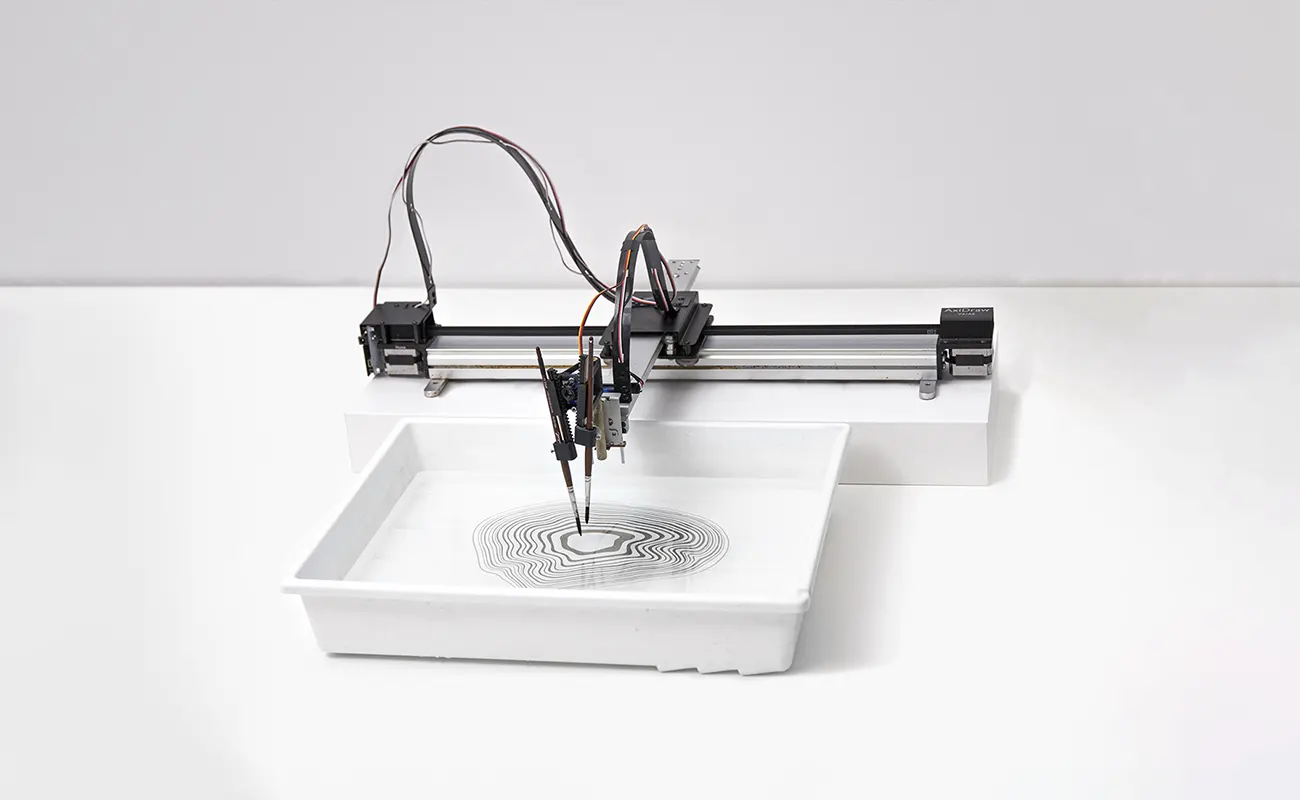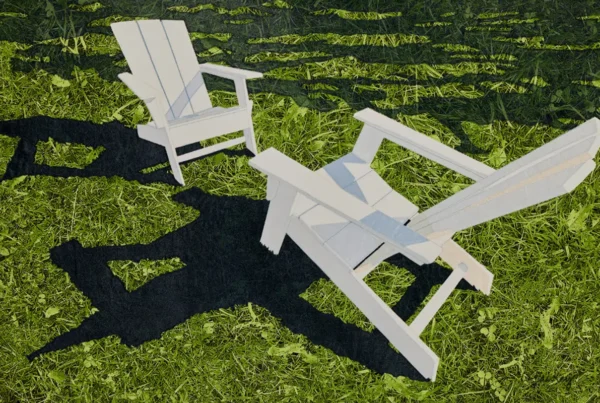“No matter how well I control all the parameters involved in creating a work of art, there will always be a degree of unpredictability and randomness.”
Mechanized Imagination: The Genesis of Pfeffer’s Artistic Voyage
Arnaud Pfeffer, a seasoned industrial designer and digital artist, holds a rich educational background in mechanical engineering and industrial design from the prestigious institutions of Paris. His deep-rooted affinity for machines and manufacturing processes significantly molds his artistic endeavors. The pedagogical journey empowered Pfeffer with the prowess to construct and deconstruct mechanisms, which presently serve as the foundation for envisioning innovative forms and applications. At his avant-garde design studio Mâche&Maché, Pfeffer delves into the exploration of an unconventional material—food, employing an array of processing tools to craft novel culinary items and dining experiences.
The genesis of Pfeffer’s artistic voyage is anchored in his innate inclination towards experimenting with machines and processes. This proclivity metamorphosed into a form of disciplined exercise, enabling him to venture into unchartered territories of forms or intentions, unfettered by project limitations. The pivot towards the artistic frontier commenced with these innovative forays. Following the conclusion of his academic expedition, the loss of access to the school’s machinery galvanized him to seek a compact, yet versatile apparatus that could snugly fit within the confines of his domicile while continually fueling his experimental zeal. This endeavor ushered him to the world of drawing plotters—mechanical arms proficient in translating digital blueprints into tangible drawings. The most enthralling facet of this apparatus for Pfeffer was its ability to accommodate a diverse range of graphic tools, thus embarking on a journey of exploration with pens, felt-tips, brushes, and stamps to unfurl the instrument’s latent potential.
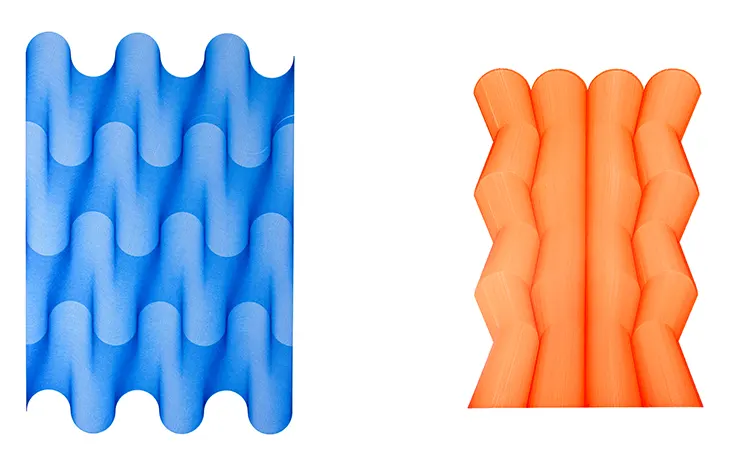
Techno-Classical Fusion: The Artistic Ethos of Arnaud Pfeffer
The artistic ethos of Arnaud Pfeffer manifests a compelling synthesis of contemporary technology and classical drawing techniques. Through a rigorous examination and mastery of diverse graphic techniques encompassing painting, drawing, and marbling, Pfeffer evolves a mechanized methodology to transpose them. This amalgamation resonates with him, propelled by the machine’s seamless motions juxtaposed against the imperfect trace left by the instrument, underscoring a duality he aspires to elucidate. Despite an assiduous control over all parameters, the inherent unpredictability and randomness in the creation process endure, resonating with the natural elements inherent in manual techniques that remain impervious to facile correction by machine.
The workspace of Pfeffer is a harmonious meld between a traditional painting studio and a digital fabrication workshop. A characteristic workflow entails a rhythmic alternation between manual testing of colors and effects and their implementation via his plotter, drill, or 3D printer. Occasionally, Pfeffer conceives mechanisms that seamlessly integrate with the graphic instruments at his behest, such as tattoo machines. The nascent stage of tool design embraces a “do-it-yourself” ethos, transitioning towards a more nuanced development phase upon the precise identification of the desired mechanism and effect. Although often maligned, distraction and digression are indelibly woven into his working methodology. The act of sharing his oeuvre online, delving into references, and engaging in insightful dialogues concerning ongoing projects facilitates a sequential maturation of ideas, providing them the space to flourish.

Tradition Meets Tech: Pfeffer’s Automated Suminagashi Series
Esteemed artists such as Bernard Frize and Vera Molnar, heralded for their industrial aesthetic and digital art pioneering respectively, have significantly imbued Arnaud Pfeffer’s artistic endeavors with a distinct resonance. The open discourse and exhibition of their creative processes and artwork have granted Pfeffer a profound comprehension of their artistic sojourns.
A particular series of creations, Automated Suminagashi, embodies a notable confluence of significance for Pfeffer. This series elegantly amalgamates mechanical dexterity with the age-old Japanese water-marbling artistry, Suminagashi. This traditional practice necessitates meticulous gestural finesse to craft intricate shapes and patterns using ink and soap on the water’s surface, a feat Pfeffer endeavors to emulate through the utilization of mechanized apparatus such as drawing plotters or automatic brushes. The robotic precision infused by these machines augments the textural allure and unanticipated nature of illustrations upon water, epitomizing a harmonious melding of tradition and contemporary ingenuity. Through Pfeffer’s meticulous efforts, a juxtaposition against the meticulous choreography of Suminagashi emerges, rendering a captivating dialogue between age-old techniques and modern-day technological advancements.
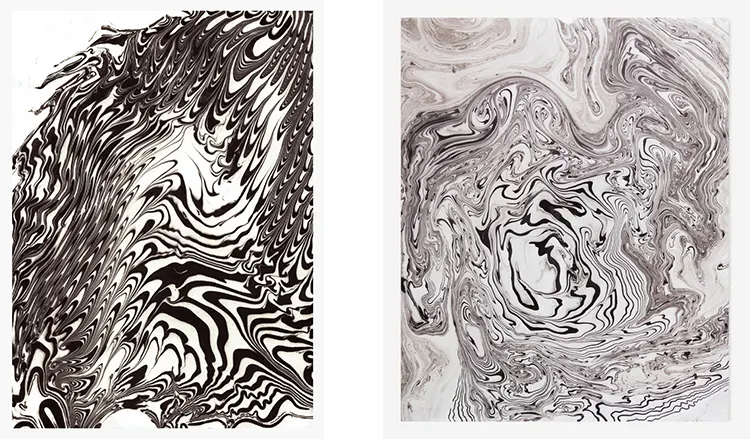
Digital Culinary: Mâche&Maché and The Art of Food Marbling
In the eclectic breadth of Arnaud Pfeffer’s artistic endeavors, no single medium claims the crown of favoritism. Yet, a discernible gravitation towards digital drawing is apparent, often employing tools synonymous with his design practice such as 3D design software and vector drawing. The aspiration for novelty drives Pfeffer to explore fresh mediums, embracing new tools and processes as epitomized in his recent foray into the art of food marbling.
This novel venture, dubbed Mâche&Maché, springs from Arnaud’s prior engagements with machines, harbouring the ambition to reshape the perception of industrialized food. Pfeffer embarks on crafting new food products through the lens of production machines and tools, illustrating the notion that industrial food, despite its mechanical metamorphosis, can encapsulate poetic and sensitive elements. His visionary project aspires towards a culinary installation that seamlessly melds machines, art, science, and technology, mirroring the rich tapestry of experiences amassed along his artistic and professional odyssey.
Arnaud’s imaginative exploration testifies not only to his willingness to traverse unfamiliar territories but also to his profound ability to intertwine the tangible and the conceptual, thereby elevating industrial food production to a plane of aesthetic and sensory appeal. Through Mâche&Maché, Arnaud Pfeffer is not merely redrawing the boundaries of artistic expression but also provoking a discerning conversation about the intersectionality of art, industry, and the culinary arts. His trajectory is a compelling narrative of the ceaseless inquiry and innovation emblematic of his artistic ethos.
